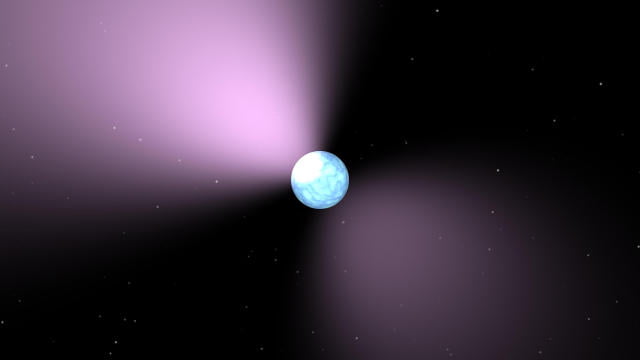
Astronomers have made a groundbreaking discovery regarding the Vela pulsar, a rapidly spinning neutron star located approximately 1,000 light-years from Earth. This celestial body has been observed emitting gamma rays with an energy output that is a staggering 200 times more potent than previously believed possible for such stars.
Key Highlights:
- The Vela pulsar’s gamma-ray output is 200 times more powerful than average pulsars.
- This discovery could indicate new, yet-to-be-understood physics surrounding neutron stars.
- Observations were made using the High Energy Stereoscopic System (HESS) telescopes.
- The gamma rays detected reached energies of 20 tera electron volts (TeV).
- The Vela pulsar completes 11 rotations per second, faster than helicopter blades.
The Vela Pulsar Phenomenon:
Pulsars, like Vela, are remnants of massive stars that have exhausted their nuclear fuel and undergone supernova explosions. These neutron stars, despite being only about 12 miles in width, possess incredibly powerful magnetic fields. These fields accelerate matter, such as electrons and positrons, to near-light speeds, creating jets of particles. When these jets emit light cones that sweep over Earth, the object is termed a pulsar.
The Vela pulsar, one of the most extensively studied neutron stars, was birthed from a supernova approximately 10,000 years ago. It spins at a remarkable rate, completing 11 rotations every second, which is faster than the blades of a helicopter. This pulsar also stands out due to its potent magnetic fields, which are among the strongest known in the universe.
Unprecedented Gamma-Ray Emissions:
The gamma rays observed from the Vela pulsar have energies that have never been seen emanating from a pulsar before. This suggests that there are unknown phenomena occurring around the Vela pulsar, especially concerning its polar jets, which have been observed to stretch an impressive 0.7 light-years.
Arache Djannati-Ataï, a CNRS researcher and study co-author, mentioned that the standard light cones around pulsars might not be sufficient to accelerate particles to the observed energies. The team has proposed several theories for this newfound gamma-ray emission mechanism. One possibility is that particles are being accelerated outside the standard light cone zones, or that structured magnetic fields exist beyond these zones. Another theory suggests that the winds from neutron stars might be responsible for accelerating the particles and their emissions.
Implications and Future Research:
This discovery has taken the scientific community by surprise and has opened up new avenues for research. The team plans to investigate if even higher-energy emissions are emanating from this cosmic beacon. They also aim to use the HESS observatory in Namibia to search for high-energy gamma-ray emissions from other nearby pulsars.
Djannati-Ataï emphasized:
The significance of this discovery, stating that it will help refine models of pulsar emissions. A deeper understanding of the acceleration and emission processes in pulsars could also shed light on other highly magnetized astrophysical entities, including black hole magnetospheres.
Summary:
The Vela pulsar, one of the closest neutron stars to Earth, has been observed emitting gamma rays with an energy output previously deemed impossible. This discovery, made using the HESS telescopes, challenges our current understanding of pulsars and may lead to new insights into the physics of these dense, rapidly spinning celestial bodies. The findings also underscore the need for further research into the mysterious processes at play in the universe’s most powerful magnetic fields.










